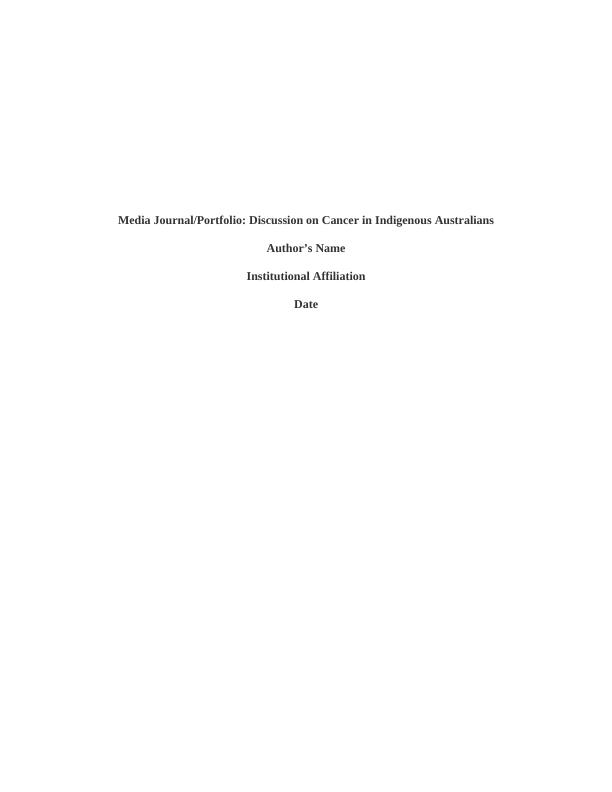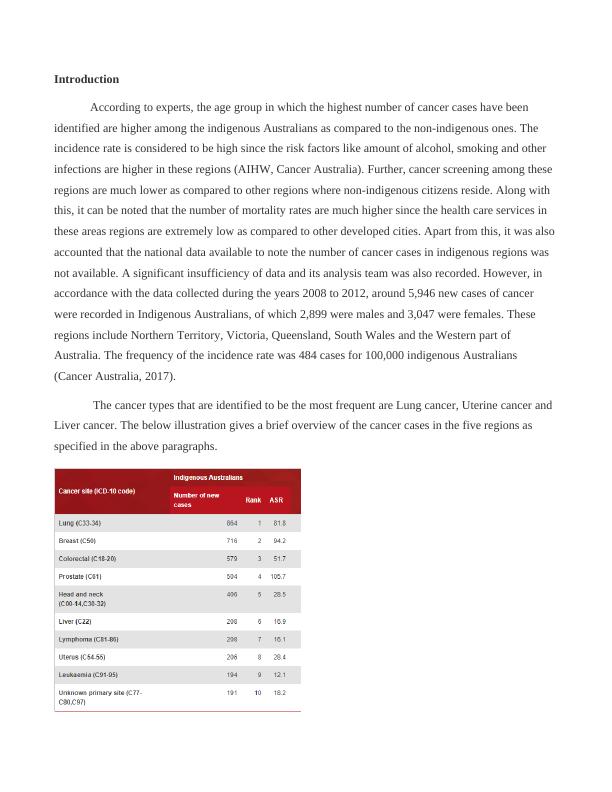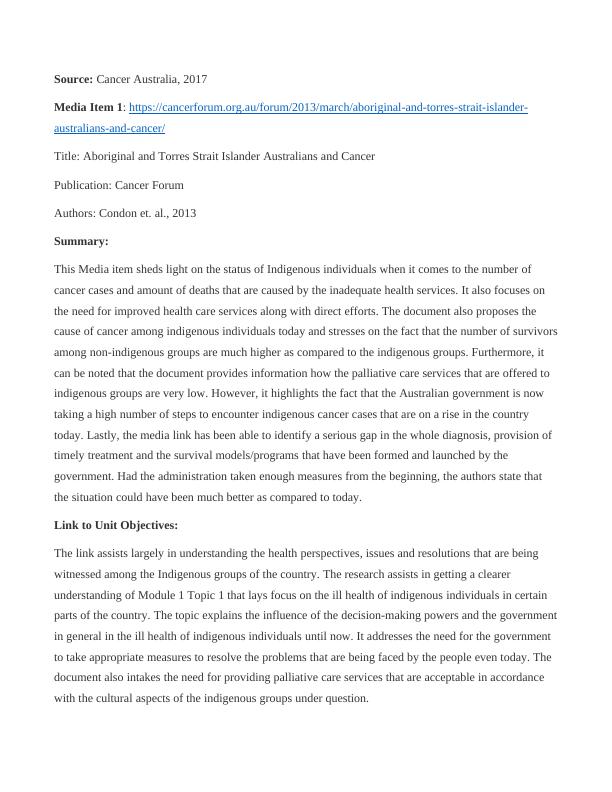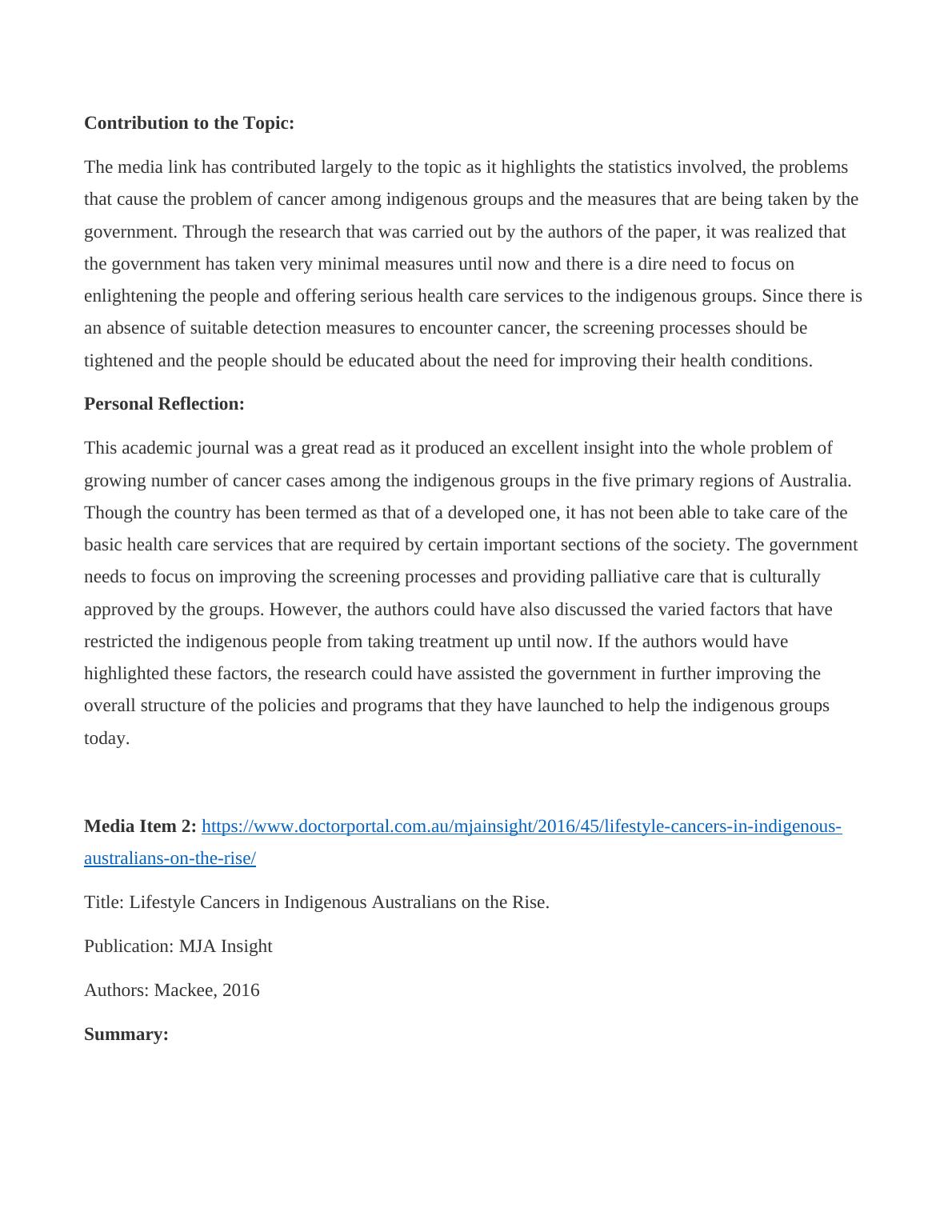Discussion on Cancer in Indigenous Australians
11 Pages3455 Words39 Views
Added on 2020-04-01
About This Document
Media Journal/Portfolio: Discussion on Cancer in Indigenous Australians Author’s Name Institutional Affiliation Date Introduction According to experts, the age group in which the highest number of cancer cases have been identified are higher among the indigenous Australians as compared to the non-indigenous ones. The document also proposes the cause of cancer among indigenous individuals today and stresses on the fact that the number of survivors among non-indigenous groups are much higher as compared to the indigenous groups.
Discussion on Cancer in Indigenous Australians
Added on 2020-04-01
ShareRelated Documents
End of preview
Want to access all the pages? Upload your documents or become a member.
LUNG CANCER 1 LUNG CANCER2 LUNG CANCER1 LUNG CANCER2 LUNG CANCER1 LUNG CANCER2 LUNG CANCER1 LUNG CANCER2 LUNG CANCER1 LUNG CANCER2 LUNG CANCER1 LUNG CANCER2 LUNG CANCER1 LUNG CANCER2 LUNG CANCER1 LUNG
|13
|3092
|275
Nursing Public Health: Bowel Cancer in Australia
|13
|3157
|92
Health Journey of an Aboriginal Person
|7
|1374
|365
Media Portfolio Collection and Analysis of an Indigenous Health and Wellbeing Issue
|16
|4044
|336
Breast Cancer in Australia: Health Needs and Evidence-Based Strategies
|7
|1701
|274
Inequity in Coronary Heart Disease among Indigenous Australians
|9
|2119
|462




